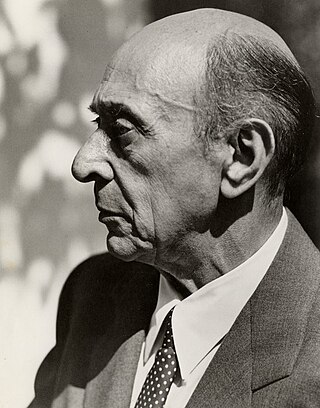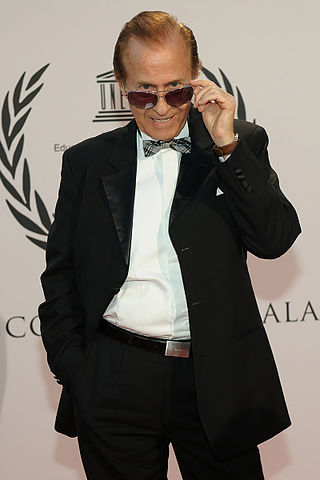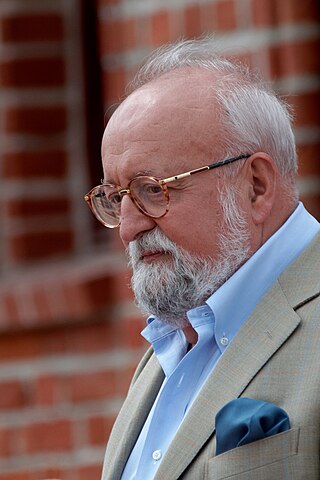
Arnold Schoenberg or Schönberg was an Austrian and American composer, music theorist, teacher and writer. He was among the first modernists who transformed the practice of harmony in 20th-century classical music, and a central element of his music was its use of motives as a means of coherence. He propounded concepts like developing variation, the emancipation of the dissonance, and the "unity of musical space".

Kindertotenlieder is a song cycle (1904) for voice and orchestra by Gustav Mahler. The words of the songs are poems by Friedrich Rückert.

In classical music, a string sextet is a composition written for six string instruments, or a group of six musicians who perform such a composition. Most string sextets have been written for an ensemble consisting of two violins, two violas, and two cellos.

Richard Fedor Leopold Dehmel was a German poet and writer.

An die ferne Geliebte, Op. 98, is a composition by Ludwig van Beethoven written in April 1816, setting poetry by Alois Jeitteles.

Marianne Rosenberg is a German Schlager music singer and songwriter.

Michael Holm is a German singer, musician, songwriter and record producer. He is primarily known as a singer of Schlager music. Although his first appearance in the hit parade was in 1962, he had his first big hit in 1969. "Mendocino", the German adaptation of a song by the Sir Douglas Quintet, was the biggest selling single that year in (Germany). The record was released in September 1969, reached number three for five weeks, selling over a million copies. Ariola presented him with a gold record in October 1970.

Pelleas und Melisande, Op. 5, is a symphonic poem written by Arnold Schoenberg and completed in February 1903. It was premiered on 25 January 1905 at the Musikverein in Vienna under the composer's direction in a concert that also included the first performance of Alexander von Zemlinsky's Die Seejungfrau. The work is based on Maurice Maeterlinck's play Pelléas and Mélisande, a subject suggested by Richard Strauss. When he began composing the work in 1902, Schoenberg was unaware that Claude Debussy's opera, also based on Maeterlinck's play, was about to premiere in Paris.

Ireen Sheer is a German-English singer. She had her first major hit in 1970 with Hey Pleasure Man. She had a top five hit on the German singles chart with "Goodbye Mama" in 1973. She went on to finish fourth at the Eurovision Song Contest 1974 representing Luxembourg, sixth at the Eurovision Song Contest 1978 representing Germany, and thirteenth at the Eurovision Song Contest 1985 representing Luxembourg again.
The Austrian composer Arnold Schoenberg published four string quartets, distributed over his lifetime: String Quartet No. 1 in D minor, Opus 7 (1905), String Quartet No. 2 in F♯ minor, Op. 10 (1908), String Quartet No. 3, Op. 30 (1927), and the String Quartet No. 4, Op. 37 (1936).

The Symphony No. 8 "Lieder der Vergänglichkeit" by Krzysztof Penderecki is a choral symphony in twelve relatively short movements set to 19th and early 20th-century German poems. The work was completed and premiered in 2005. The symphony has an approximate duration of 35 minutes. Penderecki revised the symphony in 2007 by adding a few more poem settings and the piece has expanded to around 50 minutes. Although given the designation Symphony No. 8, it was not actually the final symphony Penderecki completed before his death in March 2020; the Sixth Symphony, begun in 2008, was not completed until 2017.
The Fred Sherry String Quartet is an American classical string quartet.
Among the repertoire for the standard string sextet are the following works:
Franz Schubert's best-known music for the theatre is his incidental music for Rosamunde. Less successful were his many opera and Singspiel projects. On the other hand, some of his most popular Lieder, like "Gretchen am Spinnrade," were based on texts written for the theatre.

"Nun freut euch, lieben Christen g'mein", or “Dear Christians, One and All, Rejoice” in English, is a Lutheran hymn, written in 1523 by Martin Luther. It is one of Luther's early hymns and considered by some as one of his finest. It was published as one of eight songs in 1524 in the first Lutheran hymnal, the Achtliederbuch. The Achtliederbuch contained four songs by Luther, three by Speratus, and one by Justus Jonas. It appeared also in 1524 in the Erfurt Enchiridion.

"Ännchen von Tharau" is a 17-stanza poem by the East Prussian poet Simon Dach. The namesake of the poem is Anna Neander (1615–1689), the daughter of a person from Tharau, East Prussia. The poem was written on the occasion of her marriage in 1636 and had been set to music as a song by 1642.

Arnold Schoenberg's Zwei Gesänge, Op. 1 (1898–1903), are Lieder for baritone and piano. Each song sets a poem of Karl Michael von Levetzow. The songs bear the influence of both Johannes Brahms and Richard Wagner, whose music was traditionally opposed. In their length, depth of expression, density of texture, and transcription-like piano writing, they approached the limits of the Lied genre and anticipated Gurre-Lieder.














